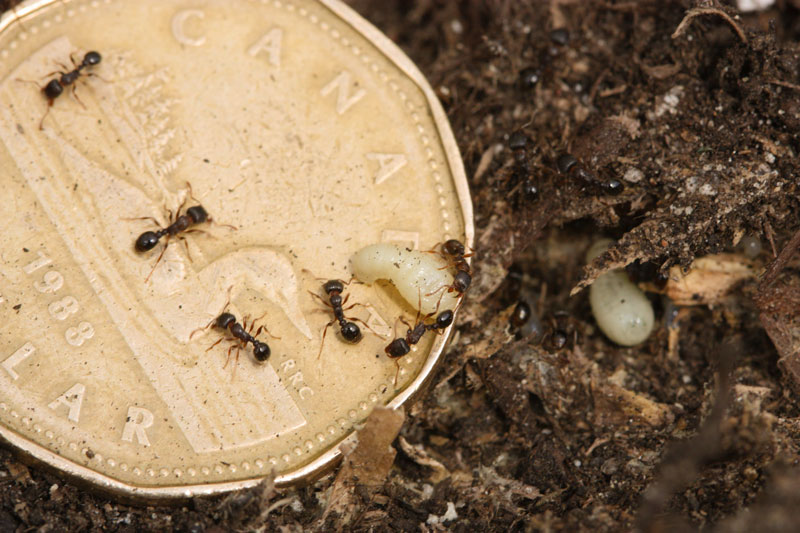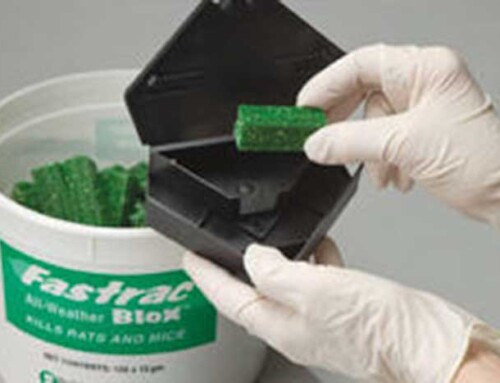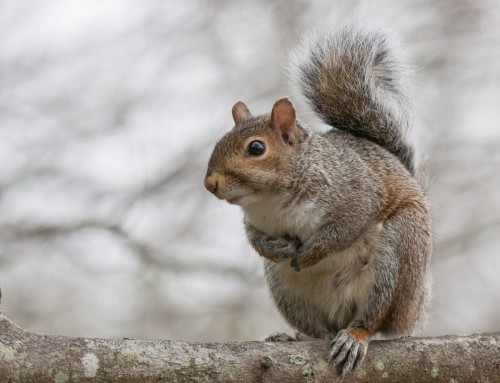Carpenter Ant Pest Control
Extermination and Fumigation Services
Carpenter Ants Extermination
Carpenter ant is one of the most common structural pests found in and around the home. They are attracted to wood which has been exposed to moisture. Carpenter ants tunnel and make nests in soft wood, however, they do not eat the wood.
The largest of the ant family, the carpenter ant ranges from 1/4 to 3/4 inches (3/5-2 cm), has a constricted waist, bent antennae and is black, reddish-black or brownish black in color. Any wooden areas (porch, tree, veranda, step, door, etc.) which become moist are vulnerable to carpenter ant attack.
This is particularly true of rotting sections of wood. The worker ant finds an entry route by gnawing a clean tunnel parallel to the wood grain wherever a crack or crevice exists. The wood is chewed and discarded outside the tunnel.
The discarded shavings, which resemble sawdust, provide an indication of nesting areas. Often, the nest is extended into sound wood. Carpenter ants must leave their wooden tunnels to search for food. Popular food sources consist of aphid honeydew, other insects (living or dead), plant juices, and food (fats, sugar and other sweets) found in the home.
Life Cycle
Carpenter ants are commonly wingless, non-reproducing adults of the worker caste. All ants live in large groups or colonies consisting of hundreds of workers, a few reproductive males and females as well as at least one queen. Mating takes place in flight by winged ants during late spring and early summer. Shortly after, the male dies and the single fertilized queen ant finds a suitable nesting place to lay eggs and begin a new colony. The small, white, oval eggs hatch into larvae. The queen continues nourishment until the larvae pupate and adult ants emerge. If warm temperatures exist, the egg to adult cycle can be completed in three months. At first, the colony is small, however, in later years the population can increase to 2000-3000 ants.
Carpenter Ants Control
Monitoring: Since Carpenter Ants are most active in the night, you are likely to notice their pathways – where the emerge from and where they vanish into. These ants may be looking for food or searching for new pathways to or from the Nest.
Also, Carpenter Ants make a rustling sounds in their nests which can be heard in the absence of ambient noise.
Understanding the habits and life cycle of the carpenter ant can be useful in its control. They are most active and cause most damage during warm summer months. Carpenter ant control may be achieved by the following: reduce or prevent excess moisture in wood; remove possible food sources; avoid storing wood inside or close to the house for long periods of time; remove any decaying wood found around the home and practice good sanitation measures.
Remove attractive food sources; store food and garbage in sealed containers to decrease attractions for carpenter ants; caulk openings or install barriers on areas which could act as entrances for ants; and provide good ventilation inside the home. If a nesting site is found, determine the extent of the damage. If structural damage has occurred, it may be necessary to remove the damaged section and the section containing the nest.
If damage is minor or removal of the wood is not possible, use a high suction vacuum to remove the ants. This should greatly reduce the colony, however, it may not totally eliminate the problem. Be sure to discard the vacuum bag in a tightly sealed garbage bag.
Carpenter Ants – Escaping the nesting area after it has been injected with Insecticide Spray – at a home in Toronto.
A Carpenter Ant.
Please, click for full resolution image.
A Carpenter Ant consuming the Sugar based Drax Ant Bait.
Please, click for full resolution image.
Pavement Ants are taking care of their pupae – Photographed in Brampton – May 2010.
Please, click for full resolution image.
Frequently asked Questions:
In most of the situations where the nest location is undetermined, it is better to use bait. The bait will be applied according to the current ant traffic patterns. These worker ants will not feed themselves on the bait, but they will take the bait to other classes of ants that would never leave the nest. That’s how the insecticide would be able to reach all members of the ant colony. That is how the problem is eradicated at it’s root level.
Carpenter Ants Pest Control and Extermination:
We prefer to utilize a commercially registered insecticide Bait application to deliver a successful Carpenter Ants Pest Control and extermination.
Here are the key points:
- Because broadcast application of Control Agents is avoided in Bait application, it results in less pollution and general hazard for people and pets. Hence, there is a lot less intrusion to the flow of life.
- Carpenter Ants would be attracted to the bait and having consumed it, they would be impacted by it. The Carpenter Ants are least likely to be going into new areas to widen the area of the infestation.
- Not only that the Carpenter Ants would be exterminated having consumed the bait but they would also prove to be a source of secondary poisoning for other Carpenter Ants.
- This technique is cleaner in it’s application and safer for people and pets.
- Client is not required to prepare the property in any way for the application process.
- Client is not required to leave the property during nor after the application.
The Expected Results of Carpenter Ants Extermination and Outcome of the Treatment:
In about 3-5 weeks, all Carpenter Ants would have had the time and opportunity to feed on the bait. The bulk of Bait’s content is palatable food for Carpenter Ants but it also contains a small but lethal amount of active agent. It is this substance that eliminates Carpenter Ants.
Gradually all Carpenter Ants would become affected in all of their nesting areas. In about 3-5 weeks all Carpenter Ants would have expired. Most of the Carpenter Ants would have died behind the scene in their hidden nesting spaces. In cases of very high infestations, there may be dead Carpenter Ants found near the foraging areas.
When it comes to cleaning away the debris and remnants of Carpenter Ants, standard care should be taken. Try to avoid inhaling the dust and debris. Spray anti-bacterial cleaning agent to suppress the particles from becoming air borne. Then wipe them off with a disposable cleaning cloth. Use of cleaning gloves is recommended.
Our exterminators will inspect the structure for points of vulnerabilities that may facilitate future infestations or conditions that may be helping Carpenter Ants to flourish. It will be up to the owner to act on the recommendations.
At Quest Pest Management Inc., we have the highest success rate of complete Carpenter Ants Pest Control and extermination – only with the initial treatment.
Prior to carrying out treatment for Carpenter Ants, we will do an inspection or survey of the property to determine the extent and scope of the infestation. In doing so, we will also obtain information from people present on site.








